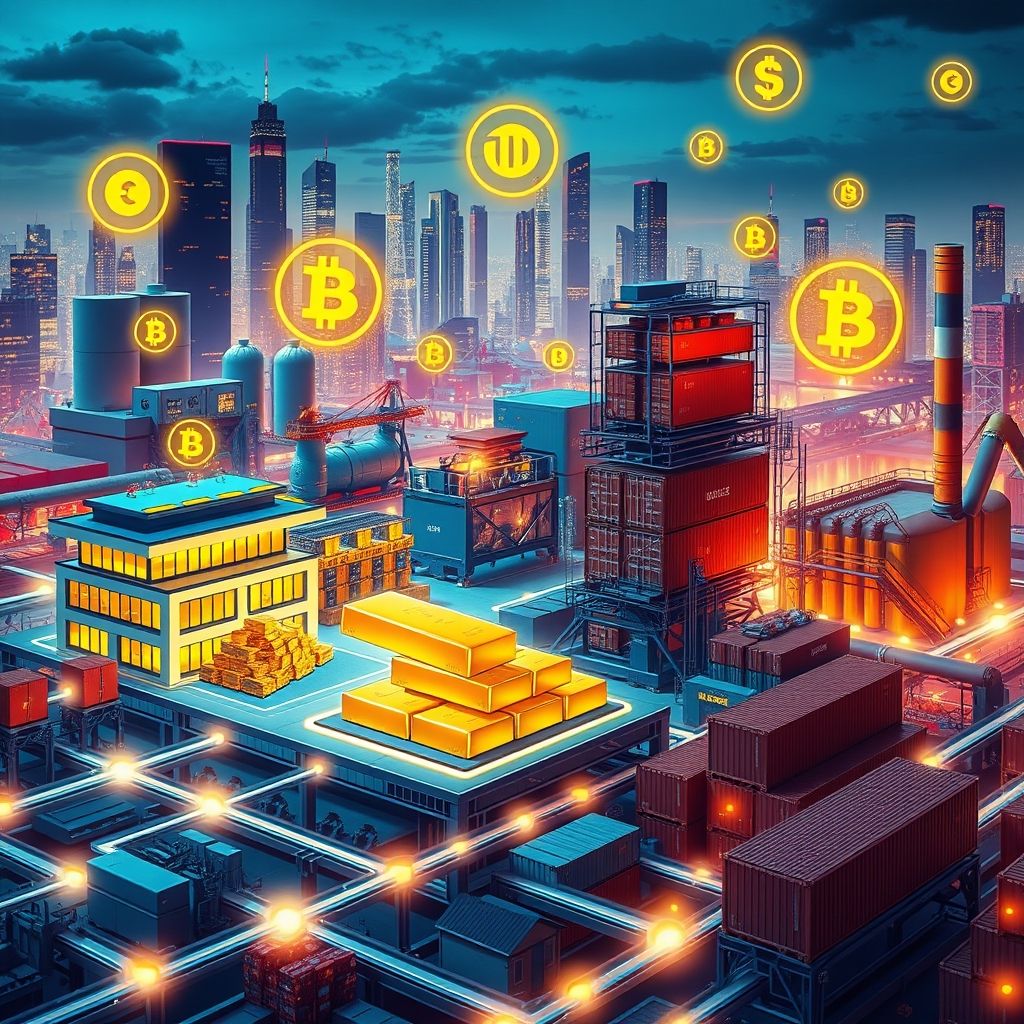How do real world assets impact blockchain and cryptocurrency projects?
How Do Real World Assets Impact Blockchain and Cryptocurrency Projects?
Imagine a world where your home, stocks, gold, or even your favorite commodities are seamlessly integrated into blockchain networks—no more middlemen, faster transactions, and instant access to markets. That’s the promise of real-world assets (RWAs) in the crypto space. It’s not just hype; it’s a game-changer, reshaping how we think about value and finance on a decentralized level.

Unlocking New Potential with Real World Assets
Bringing physical assets onto blockchain isn’t just a technical feat; it’s a paradigm shift. It bridges traditional finance with the digital world, opening up a host of opportunities to diversify, hedge, and innovate. Platforms are now tokenizing everything from real estate and artworks to commodities like gold and oil, making these assets more accessible for everyday investors.
For example, imagine owning a fraction of a luxury apartment or a barrel of crude oil without the hefty paperwork or complex brokerages. Tokenization breaks down barriers, allowing even small investors to dip their toes into big waters—think real estate or fine art—through easily tradable digital tokens.
Enhancing Liquidity and Market Efficiency
Tokenized RWAs breathe new life into liquidity pools. Traditional assets often face sluggish trading volumes; but when these are represented as tokens on decentralized exchanges or DeFi platforms, assets can be bought or sold 24/7. This dynamism means faster price discovery and more efficient markets.
Take crypto-backed real estate platforms—these let you buy fractional shares of a property, and their liquidity depends on how much the asset is tokenized and integrated into the blockchain. If done well, it unlocks a floodgate of liquidity for assets previously considered illiquid.
DeFi and Asset Backing: Confidence or Complexity?
Decentralized finance (DeFi) is riding high on this wave, but there’s a delicate balance between innovation and risk. Asset-backed stablecoins, for example, claim to be pegged to the dollar or gold. When fully collateralized, they add security and trust, but transparency becomes a critical point. Audits and real-time proof of reserves are pivotal here.
The challenge lies in ensuring the authenticity and proper custody of these RWAs. A misstep could spark trust issues or even legal gray areas. That’s why robust custodial solutions and multi-layer security protocols are essential.
The Power of Technology: Smart Contracts and AI
Smart contracts are the backbone that makes RWAs more practical. They automate legal and financial processes—transferring ownership, paying dividends, or settling trades—without manual intervention. Combine that with AI-driven analytics, and suddenly you have automated trading strategies based on real-time market data, sentiment analysis, or macroeconomic indicators.
Picture this: an AI-powered system monitors global commodity prices, cross-references economic indicators, and automatically adjusts your positions—using blockchain-enabled assets—to optimize risk and reward. That’s not science fiction; it’s the near future of asset management.
Challenges Along the Path
Despite all its appeal, incorporating RWAs into blockchain projects isn’t without hurdles. Regulatory uncertainties, custody concerns, and legal recognition remain sticking points. The legal status of tokenized assets often varies from jurisdiction to jurisdiction, making cross-border transactions complicated.
Moreover, security is a major concern. Asset custody solutions need to be airtight to prevent hacks and fraud. If a tokenized real estate platform gets compromised, it’s not just numbers on a screen—you’re talking about real-world property.
Future Trends: Decentralized Finance and Smart Asset Management
Looking ahead, decentralized finance continues to evolve, with an increasing focus on integrating RWAs into the ecosystem. Smart contracts will handle more complex interactions—like collateralized loans against real-world assets—and AI will optimize investment strategies.
The rise of security tokens and hybrid models also suggests a future where regulation and innovation go hand in hand. Expect more cross-chain compatibility, greater transparency, and more sophisticated risk management tools.
The integration of RWAs isn’t just about adding assets to blockchain; it’s about redefining what finance can be—more inclusive, more efficient, and more innovative. For traders and investors, it means increased opportunities with real-world backing, but it also calls for smarter risk management and infrastructure security.
As the decentralized economy continues to mature, assets like real estate, commodities, and stocks will become part of a fluid, global marketplace—powered by blockchain and AI—leading us toward a future where we can truly own and transfer assets with a few clicks.
Unlock your financial future—where real-world assets meet the limitless potential of blockchain.